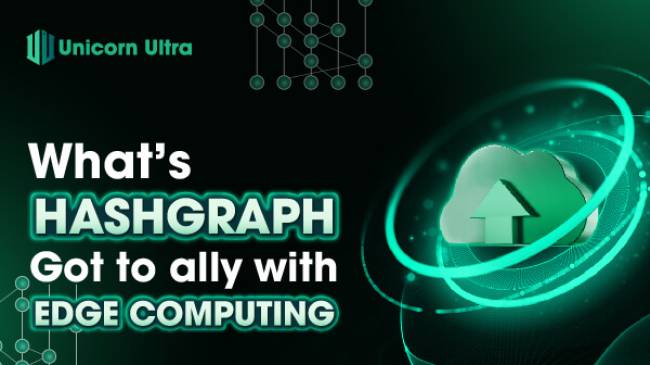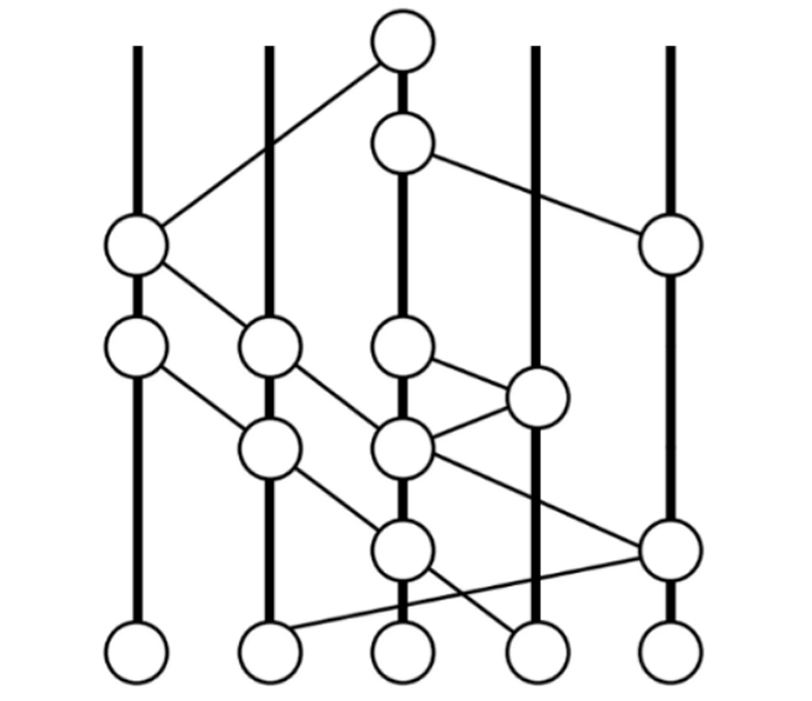Categories: General Information
What's Hashgraph got to ally with Edge Computing?
Everyday discussions in the industry mention more and more about the Hashgraph consensus algorithm as an alternative to Blockchain. How interesting, we have also long witnessed the close connection between blockchain and Edge Computing as a symbiotic relationship.
Thus, can Hashgraph also have such a relationship with Edge Computing? This blog by Unicorn Ultra will explore how Hashgraph and Edge Computing can form a sustainable alliance, especially as the Blockchain industry is facing pressure from its endogenous issues.
Table of Contents
Hashgraph: An Overview
"Blockchain will give multi-agent system AIs a way to evolve its sapience, just like what written language provided humanity." - Pointed out by Dr. Maxim Orlovsky.

Since being implemented by Satoshi, today, traditional blockchains have become increasingly vogue. Many of these have found their suited use cases. However, none of these meet all the requirements for a comprehensive platform, such as scalability, speed, storage, error tolerance, network security, AI integration, and communication.
Now we're talking about the blockchain and Edge computing relationship. Edge computing can construct an infrastructure for blockchain nodes to build, store and verify transactions. On the other hand, blockchain could enable a strongly open distributed cloud marketplace.
As we see, Hashgraph plays an alternative role to Blockchain. So, Hashgraph can be an ally with Edge Computing, even creating a powerful platform that delivers truly impressive performance compared to blockchain.
How does Hashgraph work?
Hashgraph, in some aspects, generally becomes synonymous with the term distributed ledger technology - similar to Blockchain. However, Hashgraph still is the consensus algorithm; it means a mechanism that allows users or machines to work together in a decentralized setting.
The consensus algorithm ensures that all actors in the system can agree on a single truth, even if some actors in the system fail. In other words, the system must be fault tolerant. So it's an entirely different story compared to centralized: in a decentralized setting, the consensus algorithm like Hashgraph is running without a leader and constructs an infrastructure for network nodes.

Unlike blockchains, Hashgraph does not bundle data into blocks or use miners to validate transactions. Instead, Hashgraph uses a "gossip about gossip" protocol where the individual nodes on the network "gossip" about transactions to create directed acyclic graphs that time-sequence transactions. Each "gossip" message contains one or more transactions, a timestamp, a digital signature, and cryptographic hashes of two earlier events.
To achieve Byzantine Fault Tolerance and thereby ensure consensus, secure the network, and verify transactions, Hashgraph uses a virtual voting process. Although voting mechanisms are often inefficient due to the actual voting factor, Hashgraph avoids this through universal voting. Instead, nodes refer to the hashgraph to determine an agreement on the network.
The Hashgraph consensus algorithm is known for its high scalability and low-latency transaction processing. Hashgraph utilizes a directed acyclic graph (DAG) structure to achieve consensus among participants, eliminating the need for resource-intensive mining and ensuring fast and efficient transaction confirmation. Leveraging Hashgraph can handle a large number of transactions per second, making it suitable for high-demand applications.
Hashgraph could be allied full circle with Edge computing
The issues around the time to process blockchain transactions are due to the required processing power, such as general purpose servers and processors may not be unresponsive. Another factor contributing to delays in blockchain networks is the building of network architectures. For blockchain nodes to communicate with one another, data has to travel through the entirety of the network and back, similar to how traffic flows in cloud computing.
The fact is Hashgraph solved all the above problems of blockchain, making Hashgraph becoming comprehensive than blockchain in most cases, as explained in the "Overview." While edge computing can strongly support blockchain to goodbye the "trilemma," it can be full circle allying with Hashgraph to become perfect than anything.
Edge computing is less affected by the required processing power, other than the fact that edge computing infrastructure may be more likely to have GPUs and high compute processors given that many of the applications for edge computing are high bandwidth, low latency types, which demand these capabilities anyway. Besides, an edge computing network would create mechanisms for new data flows, server-to-server, and remove the need for data to have to traverse through the core network.

Hashgraph is the future of the Internet and distributed technology. Hashgraph is designed to be a uniform data structure that replaces blockchains. It is positioned as a commercially viable solution for things such as micropayments, distributed money markets, real-time coordination, distributed MMOs, etc. Significantly, Edge Computing emphasizes software-defined network security powered by Hashgraph.
The challenge with edge computing is building a commercial model to make it easy for developers to access edge cloud infrastructure. The risk still exists that edge computing infrastructure remains fragmented across telecom operators. It means that an application developer would have to interface with each telecom operator to ensure the application works across consumers within a country and across borders. Otherwise, the developer risks not being able to guarantee a consistent (low latency) experience.
To simply solve this is through aggregation, with single entities playing the role of creating the single interface that telco edge infrastructure plugs into. The issue with this is that it produces control points, as we have seen in the cloud market, with the hyperscale giants (AWS, Azure, Google Cloud Platform, etc.) taking most of the market share, particularly in the public cloud.
Instead, Hashgraph could be used to create a decentralized edge computing marketplace matching suppliers of edge infrastructure with those who demand it without a single control point.
Conclusion
In short, Hashgraph is a solution for the decentralized future, with its advantages that will provide more power for Edge Computing to take advantage of. Therefore, considering using Hashgraph is the trend of the 4.0 technology industry, which promises to witness a boom in the near future.
